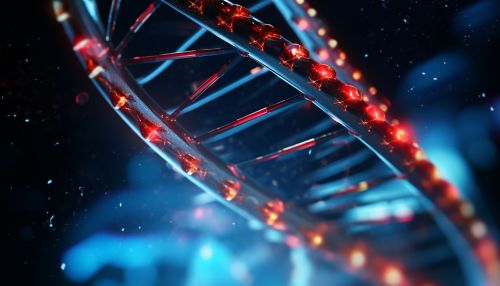The Role of Microsatellites in Genetic Studies
Introduction
Microsatellites, also known as Simple Sequence Repeats (SSRs) or Short Tandem Repeats (STRs), are small, repeating sequences of DNA that play a significant role in genetic research. They are found throughout the genome, in both coding and non-coding regions, and are highly polymorphic, making them valuable tools for a variety of genetic studies.


Structure and Characteristics of Microsatellites
Microsatellites are composed of repeating units of 1-6 base pairs in length. The most common type of microsatellite is a dinucleotide repeat, which consists of two base pairs repeated multiple times. Other types include trinucleotide, tetranucleotide, pentanucleotide, and hexanucleotide repeats. The number of repeats in a microsatellite can vary greatly, from just a few to over a hundred.
One of the key characteristics of microsatellites is their high level of polymorphism. This is due to the fact that the number of repeats in a microsatellite can change rapidly over generations, a phenomenon known as microsatellite instability. This instability is caused by errors in DNA replication, specifically in a process called DNA slippage, which can result in the addition or deletion of repeat units.
Role in Genetic Studies
Due to their high polymorphism and widespread distribution throughout the genome, microsatellites have become invaluable tools in genetic studies. They are used in a wide range of applications, including:
Genetic Mapping
Microsatellites are frequently used as markers in genetic mapping studies. Because they are so variable, they can help to distinguish between different individuals or populations, and can provide information about the inheritance of certain traits.
Population Genetics
In population genetics, microsatellites are used to study the genetic diversity and evolutionary history of populations. By comparing the microsatellite profiles of different populations, researchers can infer patterns of migration, gene flow, and genetic drift.
Forensic Genetics
Microsatellites are also used in forensic genetics, where they can help to identify individuals or determine biological relationships. The FBI, for example, uses a set of 13 specific microsatellite loci, known as the Combined DNA Index System (CODIS), in its forensic analyses.
Disease Studies
Certain diseases, particularly those involving the nervous system, have been linked to abnormalities in microsatellite sequences. For example, Huntington's disease is caused by an expansion of a trinucleotide repeat in the Huntingtin gene.
Advantages and Limitations of Microsatellites
Microsatellites offer several advantages as genetic markers. They are highly polymorphic, which makes them very informative. They are also co-dominant, meaning that both alleles in a diploid organism can be detected independently. Furthermore, they can be analyzed using simple PCR-based techniques.
However, microsatellites also have some limitations. They can be difficult to analyze due to the presence of stutter bands, which are additional bands on a gel that result from slippage during PCR. They can also exhibit null alleles, which are alleles that do not amplify during PCR and therefore are not detected. Finally, they can show linkage disequilibrium, which is a non-random association of alleles at different loci.
Conclusion
Microsatellites play a crucial role in genetic studies, providing valuable insights into genetic diversity, inheritance patterns, population dynamics, and disease mechanisms. Despite their limitations, their high degree of polymorphism and ease of analysis make them powerful tools in the field of genetics.
